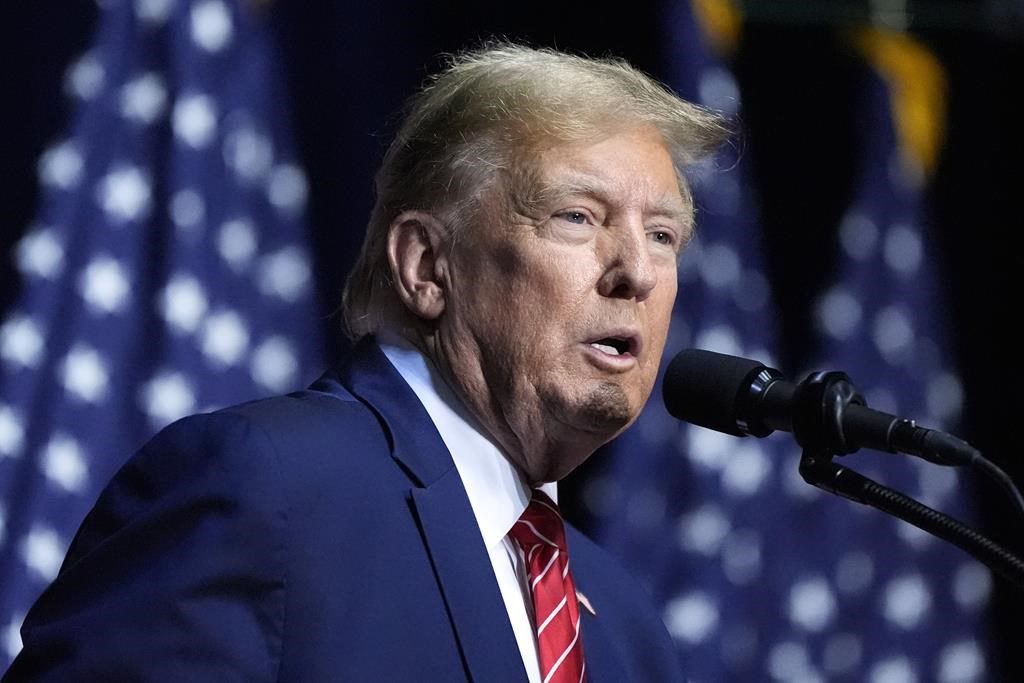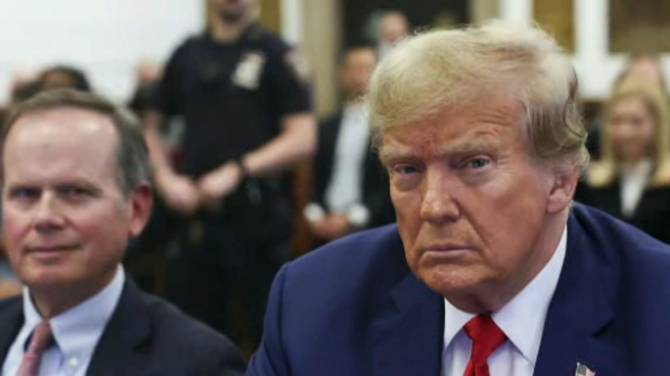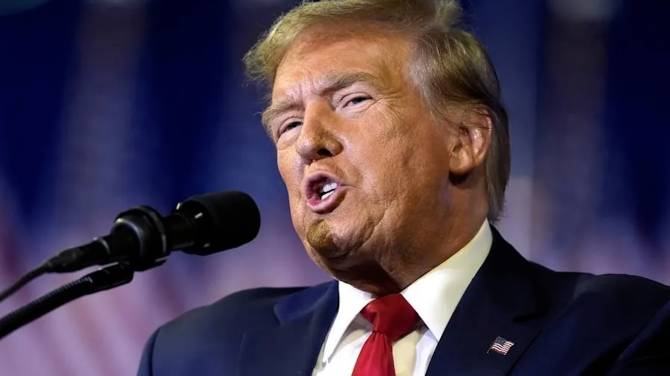Donald Trump Donald Trump put up a $175 million bond on Monday for his New York civil fraud case, stopping the collection of the more than $454 million he owes and stopping the state from taking his assets to pay the debt while he appeals, as stated in a court filing.
A New York appellate court had given the former president 10 days to put up the money after a panel of judges agreed last month to reduce the amount needed to stop the clock on enforcement.
The bond Trump is posting with the court now is essentially a placeholder, meant to ensure payment if the judgment is upheld. If that happens, the presumptive Republican presidential nominee will have to pay the state the whole sum, which grows with daily interest.
If Trump wins, he won’t have to pay the state anything and will get back the money he has put up now.
Before the appeals court intervened to lower the required bond, New York Attorney General Letitia James had planned to start efforts to collect the judgment, possibly by taking some of Trump’s well-known properties. James, a Democrat, brought the lawsuit on the state’s behalf.
The court ruled after Trump’s lawyers complained it was “a practical impossibility” to get an underwriter to sign off on a bond for the $454 million, plus interest, that he owes.
Trump is trying to overturn a judge’s Feb. 16 finding that he lied about his wealth while building the real estate empire that propelled him to fame and the presidency. The trial focused on how Trump’s assets were valued on financial statements that went to bankers and insurers to secure loans and deals.
Trump denies any wrongdoing, stating that the statements actually underestimated his wealth, came with disclaimers and were not accepted at face value by the institutions that lent to or insured him.
The state courts’ Appellate Division has said it would hear arguments in September. A specific date has not been set. If the schedule holds, it will fall in the final weeks of the presidential race.
Under New York law, filing an appeal generally doesn’t stop enforcement of a judgment. But there’s an automatic pause — in legal terms, a stay — if the person or entity obtains a bond guaranteeing payment of what’s owed.
Courts sometimes make exceptions and reduce the amount required for a stay, as in Trump’s case.
Trump’s lawyers had informed the appeals court that more than 30 bonding companies were unwilling to accept a mix of cash and real estate as collateral for a $454 million-plus bond. Underwriters insisted on only cash, stocks or other liquid assets, the attorneys said.
They said most bonding companies require collateral covering 120% of the amount owed.
Trump recently claimed to have almost a half-billion dollars in cash — along with billions of dollars worth of real estate and other assets — but said he wanted to have some cash available for his presidential run.
Recent legal debts have taken a sizable chunk out of Trump’s cash reserves.
In addition to the $175 million he had to put up in the New York case, Trump has posted a bond and cash worth more than $97 million to cover money he owes to writer E. Jean Carroll while he appeals verdicts in a pair of federal civil trials. Juries found that he sexually assaulted her in the 1990s and defamed her when she went public with the allegation in 2019. He denies all the allegations.
In February, Trump paid the $392,638 in legal fees the judge told him to cover for The New York Times and three reporters after he lost the lawsuit over a 2018 story about his family’s money and taxes.
In March, a British court instructed Trump to pay legal fees of 300,000 pounds ($382,000) to a company he unsuccessfully sued over the so-called Steele dossier that contained scandalous allegations about him. Trump claimed those allegations were untrue.
Trump may make money in the future by selling some of the almost 60% of stock he has in his new public social media company, Trump Media & Technology Group — but this would take time. Trump’s shares could be worth billions, but a “lock-up” rule stops insiders like him from selling their shares for six months.





